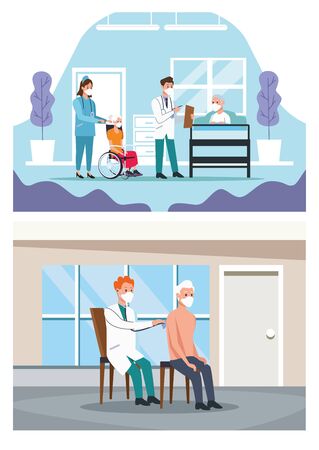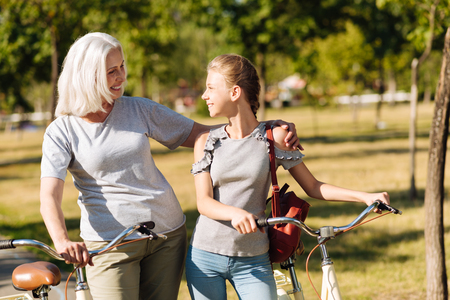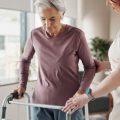Introduction to Joint Replacement in Seniors
Joint replacement surgery has become a common solution for older adults in the United States who struggle with severe joint pain or limited mobility. As people age, wear and tear on their joints—especially hips and knees—can lead to arthritis, injuries, or other conditions that make everyday activities challenging. Joint replacement offers a way to restore movement and improve quality of life.
Why Are More Seniors Getting Joint Replacements?
The aging population in America is growing rapidly. According to recent studies, the number of Americans aged 65 and older is increasing every year. This shift means that more seniors are dealing with joint problems. The most common reasons older adults need joint replacement surgery include:
| Common Causes | Description |
|---|---|
| Osteoarthritis | The most frequent reason; caused by breakdown of cartilage over time |
| Rheumatoid Arthritis | An autoimmune condition leading to joint inflammation and damage |
| Previous Injuries | Old fractures or trauma can cause long-term joint issues |
| Obesity | Extra weight puts more stress on joints, speeding up damage |
The Prevalence of Joint Replacement Among Older Adults
With advances in medical technology, joint replacement procedures have become safer and more effective. Every year, hundreds of thousands of hip and knee replacements are performed in the U.S., and a significant portion of these surgeries are done for seniors. As more people live longer, active lives, the demand for these surgeries will likely keep rising.
The Importance of Rehabilitation After Surgery
Recovering from joint replacement is not just about the surgery itself. Physical therapy plays a crucial role in helping seniors regain strength, flexibility, and independence after their procedure. In the following sections, we’ll explore how physical therapy supports successful rehabilitation for older adults after joint replacement surgery.
2. Benefits of Physical Therapy After Joint Replacement
How Physical Therapy Supports Recovery
After joint replacement surgery, especially for seniors, physical therapy plays a vital role in the healing process. It helps patients get back on their feet safely and confidently. A personalized therapy plan is designed to meet each individuals needs, focusing on reducing pain and swelling, regaining strength, and improving flexibility. Therapists also teach proper movement techniques to avoid injury and speed up recovery.
Restoring Function and Mobility
The main goal of physical therapy after joint replacement is to restore normal function. This means helping seniors return to everyday activities like walking, climbing stairs, or getting in and out of a chair. Regular exercises and hands-on treatments are used to improve balance, coordination, and muscle strength around the new joint. By practicing these movements in a safe environment, seniors build confidence to move independently at home and in the community.
Common Functional Goals After Joint Replacement
| Activity | Physical Therapy Support |
|---|---|
| Walking | Gait training, use of assistive devices (walker, cane), balance exercises |
| Climbing Stairs | Strengthening leg muscles, practicing step-ups in therapy sessions |
| Sitting and Standing | Functional strength exercises, teaching safe techniques for transitions |
| Self-Care Activities | Improving joint range of motion, energy conservation tips |
Promoting Independence for Seniors
A key part of rehabilitation is helping seniors regain independence. Physical therapists work closely with patients to set realistic goals based on their lifestyle and home environment. Education about joint protection and fall prevention is provided so that seniors can live more confidently on their own. Family members are often included in the process to support long-term success at home.
Physical Therapy and American Healthcare Goals for Seniors
In the United States, healthcare providers focus on helping seniors maintain quality of life and independence as they age. Successful rehabilitation after joint replacement supports this goal by:
- Reducing hospital readmissions through safe mobility training
- Lowering the risk of complications like falls or infections
- Encouraging active participation in community life
- Supporting aging in place whenever possible
This approach not only benefits individual seniors but also aligns with broader public health goals across America.

3. Key Components of a Senior-Focused Rehabilitation Program
Personalized Therapy Plans for Older Adults
Every senior has unique needs and goals when recovering from joint replacement surgery. Physical therapists in the United States design personalized therapy plans that consider each person’s age, health conditions, lifestyle, and home environment. This tailored approach helps seniors regain mobility, independence, and confidence at a comfortable pace. Therapists often collaborate with patients and their families to set realistic goals that are meaningful for daily American life, such as walking safely in the neighborhood or enjoying time with grandchildren.
Safety Considerations in Rehab for Seniors
Safety is a top priority during rehabilitation, especially for older adults who may be at higher risk for falls or complications. Physical therapists focus on:
- Monitoring vital signs and pain levels during exercises
- Teaching safe movement techniques for getting in and out of bed or chairs
- Recommending assistive devices like walkers or grab bars if needed
- Ensuring the home environment is free from tripping hazards
- Adapting exercises to prevent overexertion or injury
Common Safety Strategies in Senior Rehab
| Strategy | Description | Example in Daily Life |
|---|---|---|
| Fall Prevention Education | Teaching ways to avoid slips and falls | Wearing non-slip shoes inside the house |
| Pain Management Techniques | Using methods to control discomfort after therapy sessions | Applying ice packs as recommended by the therapist |
| Home Modifications Advice | Suggesting changes to make living spaces safer | Installing handrails in bathrooms or along stairs |
Evidence-Based Practices Tailored to American Seniors’ Lifestyles
The best physical therapy programs use evidence-based practices—methods that have been proven effective through research. For seniors in the U.S., therapists often include:
- Functional Exercises: Training that mimics real-life activities, such as rising from a chair or climbing steps commonly found in American homes.
- Balance and Strengthening Drills: Focusing on muscle groups needed for safe walking, grocery shopping, or community activities.
- Pain and Swelling Control: Using modalities like gentle stretching, massage, heat, or cold packs as supported by current research.
- Patient Education: Providing clear information about what to expect after joint replacement and how to self-manage between therapy sessions.
- Cultural Sensitivity: Respecting diverse backgrounds and preferences commonly seen among seniors across the U.S.
The Role of Family and Community Support
A successful rehab program encourages family involvement and connects seniors with local resources. Therapists might recommend joining community exercise classes designed for older adults or support groups specific to joint replacement recovery. These connections help seniors stay motivated and socially engaged throughout their healing journey.
4. Promoting Mobility and Preventing Complications
After joint replacement surgery, especially for seniors, regaining mobility and avoiding complications are top priorities. Physical therapists play a key role in making sure recovery goes smoothly and safely. Here’s how physical therapy supports seniors during this important time.
Highlighting Fall Prevention
Falls are one of the biggest risks for seniors after joint replacement. A fall can lead to serious injury or even damage the new joint. Physical therapists work closely with patients to improve balance, strength, and confidence when moving around at home or in the community. They often recommend simple changes, such as removing loose rugs, adding grab bars in bathrooms, or using a walker until balance improves.
| Fall Prevention Strategies | Description |
|---|---|
| Home Safety Checks | Identifying and fixing trip hazards like cords and clutter |
| Assistive Devices | Using canes or walkers as needed for stability |
| Balance Exercises | Practicing standing on one leg or walking heel-to-toe with guidance |
| Proper Footwear | Wearing shoes with non-slip soles and good support |
Pain Management for Better Movement
Pain can make it hard to move around, but staying active is essential for healing. Physical therapists teach safe movement techniques and stretches that help reduce pain without overdoing it. In many U.S. clinics, ice packs, gentle massage, or even TENS units (small electrical stimulation devices) may be used alongside exercise routines to help keep pain under control.
Pain Management Tips from Physical Therapists:
- Stick to your prescribed exercise plan — slow and steady wins the race!
- Use ice or heat packs as recommended after sessions
- Communicate openly about pain levels so therapy can be adjusted as needed
- Take prescribed medications as directed by your doctor
Community Resources Available to Seniors in the U.S.
Seniors in the United States have access to a variety of helpful resources that support recovery after joint replacement. Many local community centers, YMCAs, and senior organizations offer group exercise classes tailored for post-surgery needs. Transportation services are also available in most areas to help seniors get to therapy appointments if driving is difficult.
| Resource Type | Description/Examples |
|---|---|
| Senior Centers & YMCAs | Exercise classes, walking groups, swimming programs designed for older adults |
| Transportation Services | DART (Dial-a-Ride Transit), local volunteer drivers, senior shuttle programs |
| Educational Workshops | Classes on fall prevention, nutrition, medication management at hospitals or libraries |
| Home Health Agencies | Nurses or therapists visiting the home for continued care and support |
The Bottom Line: Stay Active & Connected!
A successful joint replacement journey isn’t just about surgery—it’s about moving safely every day and knowing where to turn for help. Physical therapists guide seniors through these steps, helping them build strength and confidence while connecting them with valuable resources in their own communities.
5. Fostering Long-Term Wellness and Quality of Life
Staying Active Beyond Rehabilitation
After joint replacement surgery, physical therapy doesnt just stop when you leave the clinic. To maintain your new mobility and enjoy a high quality of life, its important to keep moving. Regular exercise helps seniors keep their joints flexible, muscles strong, and spirits high. Here are some simple ways American seniors can stay active in everyday life:
| Activity | How It Helps | Everyday Example |
|---|---|---|
| Walking | Boosts heart health and strengthens legs | Daily stroll around the neighborhood or mall walking with friends |
| Water Aerobics | Low-impact, easy on joints | Joining a local YMCA or community pool class |
| Stretching Routines | Keeps joints limber, reduces stiffness | Morning stretches or gentle yoga at home or with a group |
| Dancing | Improves balance and mood | Seniors’ line dancing or ballroom classes at a recreation center |
| Gardening | Encourages movement and flexibility | Tending to flower beds or vegetable gardens in the backyard |
The Power of Social Engagement
Physical recovery is only part of the picture—emotional wellness matters too. Staying socially connected helps prevent feelings of isolation that sometimes come after surgery. Here are some American-style ways seniors can stay engaged:
- Join a senior center: Many towns have community centers offering activities like bingo, crafts, and group meals.
- Participate in group exercise: Classes for seniors are available at most gyms and YMCAs.
- Volunteer: Helping out at local schools, libraries, or hospitals keeps you active and involved.
- Attend faith-based groups: Churches and synagogues often have social clubs for older adults.
- Create family traditions: Weekly dinners or game nights help build lasting memories.
Tapping Into Support Networks for Independence
No one has to go through recovery alone. Leveraging support networks is key to long-term independence after joint replacement. Here’s how to make the most of your resources:
- Ask family for help: Whether it’s rides to appointments or help with groceries, don’t hesitate to reach out.
- Connect with neighbors: Friendly check-ins or walking buddies make staying active more fun and safe.
- Use technology: Video calls, telehealth check-ins, and online exercise classes keep you connected even from home.
- Talk to healthcare providers: Physical therapists can recommend community programs or adaptive equipment as needed.
- Seek out local services: Meals on Wheels, senior transport services, and home modification programs can support daily living needs.
Your Path Forward: Living Life to the Fullest After Joint Replacement
The journey doesn’t end when formal rehab does. By embracing regular activity, enjoying social connections, and using available support networks, seniors across America can experience lasting wellness and independence after joint replacement surgery. Remember—every step you take helps you live your best life!


